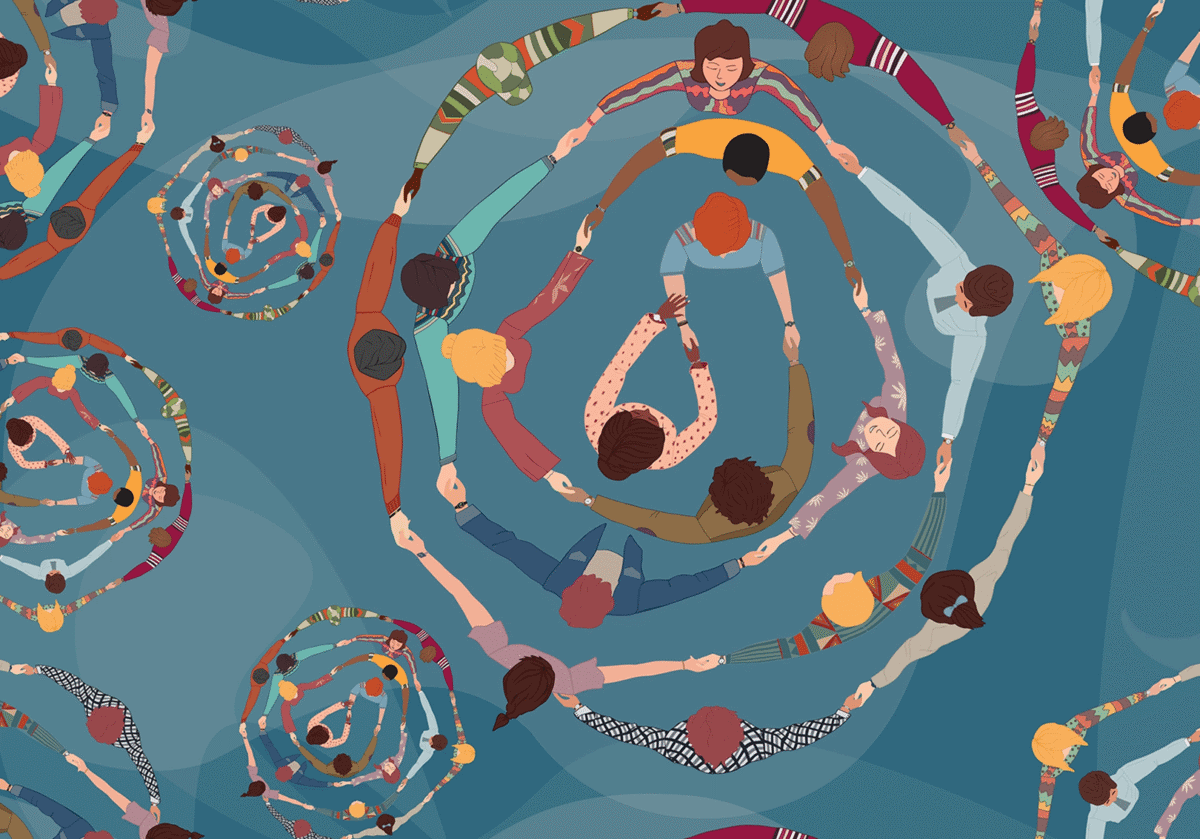Spoken language is not the only form of communication with our clients in the coaching process. In fact, a large majority of communication is through nonverbal language. The language of the body is key in the coaching process, as it forms one of the least understood process communications. The whole-body intelligence approach uses proprioception in the coaching process to dive deeper in listening beyond the words.
Proprioception is sometimes referred to as the sixth sense or the sense of self movement and position of body spatially. In a conversation, you will notice minute shifts in the client as they are expressing their world and their thoughts. Words and emotions are also translated through body movement. These movements might not always be huge moves and can also be micro-muscle movements. As we become more aware of these shifts across the session, we are able to notice a pattern, congruence or incongruence between what is said and what is unsaid.
Body intelligence is one of the growing fields of learnings that coaches can develop to use their body to sense the shifts in the client. You can further develop your coaching presence by detecting micro-muscle movements and noting what is said by the client, discovering how and what things are aligned or misaligned. This will help the client find congruence and alignment through proprioception.
The five keys of proprioception will give simple strategies for coaches to employ in a coaching conversation with clients. And remember, it’s not just the movements of the client, but also that of the coach.
1) Whole Body Intelligence in Knowing Where You are Spatially
Consider these few thoughts: How aware are we, as coaches, of how our bodies are moving in a conversation? Are we aware that there are movements in our body that could distract our client or allow our client to go deeper because of its unconscious flow through the body?
The totality of the movement in the face, arms, chest and legs is the entire use of space in the moment.
2) Movement in Conversations
We have been taught how to listen to words spoken, but few of us have been taught how to listen to movements. Observe proprioceptive movement by ourselves as coaches and the client. As we calibrate the client’s movement and speech patterns, we are able to detect areas of incongruence and use that as an opportunity to dive deeper and explore with the client. Many of these movements may not be huge, but they could be micro-muscle movements to indicate some potential barriers or beliefs that are being triggered within the client.
3) Force and Pressure – Intensity of Body Motion in Emotions (Fears and Insecurities)
When faced with challenges that we do not want others to know, we may be able to disguise them with words and a smile, but the body will not be able to hide those fears or insecurities. You will find added force or pressure across the client’s body—in their eyes, hands, lips or many other parts which will indicate some misalignments between what seems well on the surface and the hidden subsurface issues. For the coach, being bodily aware of our own nervousness and insecurities is important as the client can subconsciously pick those up.
4) Balance Control and Learnings
In a conversation, you will notice that either the client or coach want to feel in control of the moment. We, as coaches, might be overly trying to balance all things and miss out on the key things that are present in the moment. Finding the right amount of control in the emotive, physiological and cognitive allows the coach to notice when the client has tried to balance or overly compensate in areas of life or work, and this will be evident in the bodily display. Reflecting to the client what is observed and inviting the client to share in the learnings will create new opportunities for learning and growth.
5) Coaching Presence through Proprioception – Honing Our Hidden Six Sense
As coaches we are used to the five senses in picking up what is spoken and what is not. But not many have learned how to use the body to sense displacement and notice micro shifts. The proprioception is vitality important to help us get out of overthinking and into feeling with our bodies. This keen sense will allow us to sense when shifts happen that might not be obvious to our ears and sight but are felt through the changes in physical space. Using this will build our coach’s intuition and will allow us to expand the client’s awareness and ways of thinking.
Disclaimer
The views and opinions expressed in guest posts featured on this blog are those of the author and do not necessarily reflect the opinions and views of the International Coach Federation (ICF). The publication of a guest post on the ICF Blog does not equate to an ICF endorsement or guarantee of the products or services provided by the author.
Additionally, for the purpose of full disclosure and as a disclaimer of liability, this content was possibly generated using the assistance of an AI program. Its contents, either in whole or in part, have been reviewed and revised by a human. Nevertheless, the reader/user is responsible for verifying the information presented and should not rely upon this article or post as providing any specific professional advice or counsel. Its contents are provided “as is,” and ICF makes no representations or warranties as to its accuracy or completeness and to the fullest extent permitted by applicable law specifically disclaims any and all liability for any damages or injuries resulting from use of or reliance thereupon.
Authors
Post Type
Blog
Audience Type
Coach Educators, Experienced Coaches, External Coaches, ICF Chapter Leaders, Internal Coaches, New Coaches, Professional Coaches, Team and Group Coaches
Topic
Coaching Toolbox, Discover - Your Coaching Career
Related Posts
How Coaching Is Driving Inclusion Around the Globe: Lessons from Local ICF Chapters
When a group of mothers in Kazakhstan, many of whom had never…
Belonging Beyond Numbers: How ICF Demographic Trends Are Shaping the Future of Coaching
What does it really mean to belong? For the International Coaching Federation…
Professional Coaching Relationships That Work: Respect, Boundaries, and the Art of Mutuality
This post comes from Dr. D. Ivan Young, an ICF Business Solutions…








